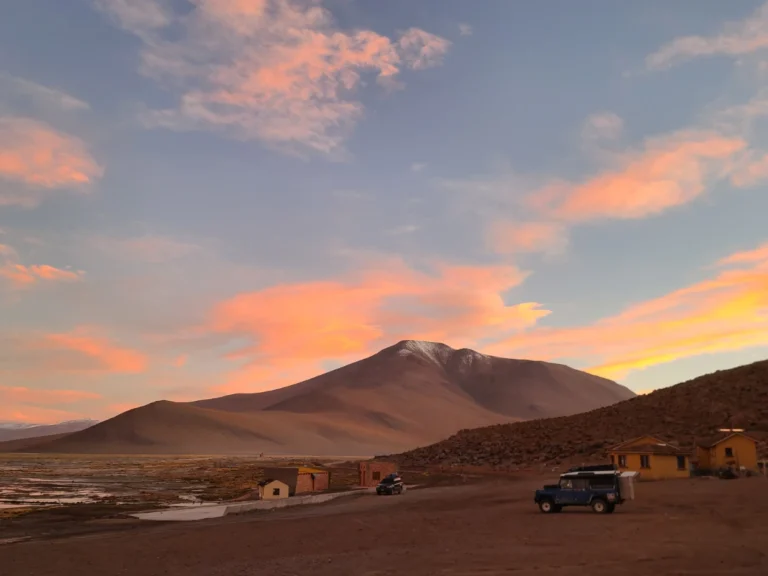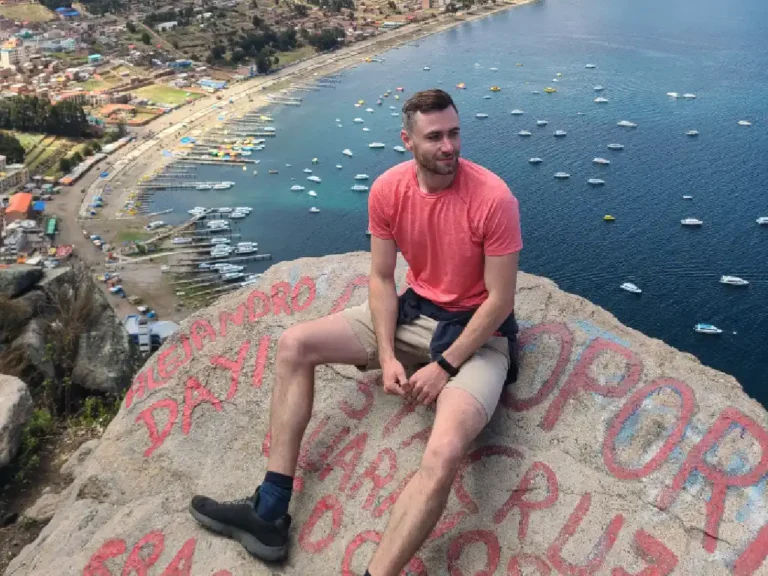Exploring the Bolivian Altiplano: What It Is & Why You’ll Probably End Up There
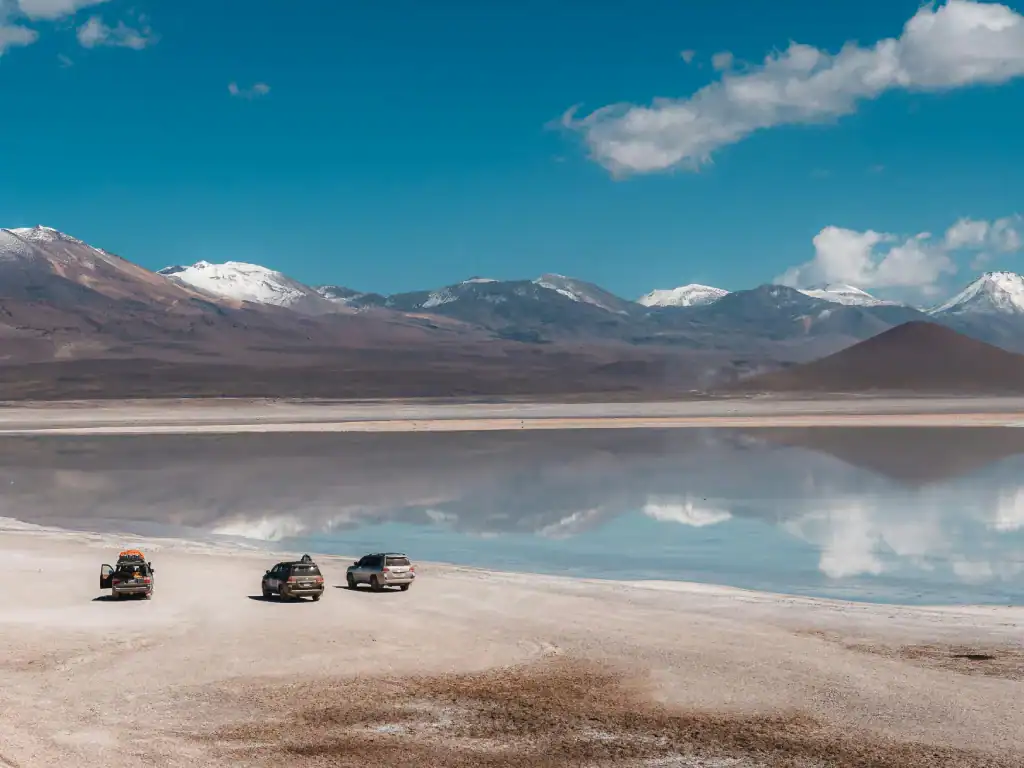
Even if you’ve never heard of the Bolivian Altiplano before, chances are if you’re heading to Bolivia, you’re already planning to go. You just might not realise it yet. From salt flats to sacred lakes, the Altiplano is where Bolivia gets all dramatic & high-altitude – and home to many of Bolivia’s top sights.
So, what exactly is it? And why does your nose feel weird the minute you land in La Paz?
Let’s break it down.
So What Is the Altiplano?
Altiplano literally means “high plain” – and that’s exactly what it is. A massive, elevated plateau tucked between the eastern & western ridges of the Andes mountains. It stretches across Bolivia, southern Peru & into Chile & Argentina, but Bolivia lays claim to the largest chunk.
In Bolivia, the Altiplano is basically the top half of the country. It sits at a casual 3,600 metres above sea level & spans over 1,000 kilometres from north to south. The landscape shifts from arid red plains to glittering lakes to salt fields that look like they’ve been stolen from another planet.
Fun fact: The only high plateau bigger than this in the world? Tibet. So yes, you’re walking around on the second-highest human-inhabited plateau on Earth.
Bonus fact: The Altiplano was once almost entirely covered by a massive prehistoric lake called Lake Ballivián. What’s left today is Lake Titicaca – everything else evaporated over millennia, leaving behind salty leftovers like the Uyuni flats & mineral-rich soil.
The Bolivian Altiplano Map

What’s It Like Up There?
A Place of Contrasts
The Bolivian Altiplano is all wide-open skies, parched earth & surreal contrasts. You can go from snow-capped volcanoes to mirror-flat salt deserts in a single bus ride. It feels kind of like being on another planet – thin air & all.
The landscape is stark but stunning – windswept, llama-dotted, often eerily quiet. Picture high desert vibes with tiny towns clinging to train tracks, rusty corrugated roofs & the occasional flamingo chilling in a roadside lagoon.
Fun fact: Flamingos don’t just live on tropical postcards – they thrive in the Altiplano’s high-altitude lagoons, like Laguna Colorada. At over 4,000m above sea level, it’s one of the world’s highest flamingo habitats. Check out this flamboyance (group name for flamingos) I captured below!
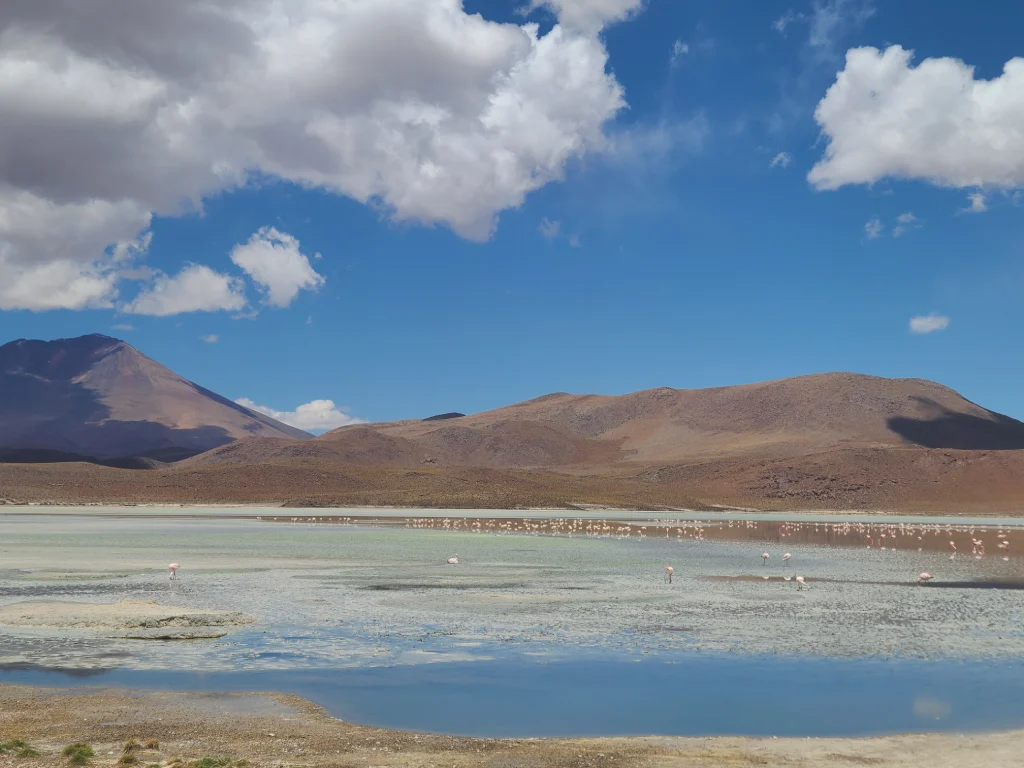
What Animals Live in the Bolivian Altiplano?
Apart from flamingos flaunting their stuff, you’ll spot hardy locals like vicuñas (wild cousins of llamas), Andean foxes, & even rheas – like South American ostriches with a less threatening vibe. Everything up here’s adapted to altitude like it’s no big deal.
Yes, the Altitude Is Real
Hot sun, cold wind & oxygen that feels like it’s playing hard to get. Welcome to high altitude travel in Bolivia.
Want the lowdown on how the seasons hit up here? I wrote about Bolivia’s climate by region – trust me, it’ll save you from packing only shorts or only thermals.
Where You’ll Probably See It Without Realising
If you land in La Paz, surprise – you’re already on the Altiplano. The whole city’s stacked into a giant bowl right on the plateau’s edge. Head up into El Alto & you’re in full Altiplano territory, dusty roads & all.
Other places you’ve definitely Googled which sit on the Altiplano:
- Lake Titicaca – the highest navigable lake in the world, linking Peru & Bolivia
- Copacabana – the lakeside town with a famous whitewashed church & chilled travel vibes
- Isla del Sol – sacred Inca birthplace island, only reached by boat
- Uyuni – the jumping-off point for the Uyuni Salt Flats
- Oruro – Carnival hotspot & an often-overlooked train town
…and if you’re staying overnight, try the market for some traditional Bolivian dishes – trout (or “trucha” in spanish) by the lake hits different at 3,800m. Genuinely one of the best meals I have ever had (5 times in 3 days still didn’t feel excessive!)
Even if you’re just connecting dots on a map, you’re crossing the Altiplano. It’s the link between most of Bolivia’s big sights.
What Makes Bolivia’s Altiplano So Special?
Ancient Civilisations on the Plateau
The Altiplano is the cultural & political heartland of Bolivia. This is Aymara & Quechua country – communities that have been here for millennia.
It’s also home to Tiwanaku (Tiahuanaco) – Bolivia’s most important pre-Inca archaeological site. Giant stone blocks, spooky underground chambers & a whole load of theories about how it was built.
Fun fact: The stones at Tiwanaku weigh up to 100 tonnes, and were moved into place without the wheel. No llamas dragged them, no cranes, no carts – just good old-fashioned mystery. Even archaeologists are still baffled. Stonehenge can do one .. jk will always have a special place in my heart, even if weirdo druids have been hitting it up a bit too much lately.
Want to Skip the Planning?
If you’re keen to see Tiwanaku or the salt flats with a bit less hassle, check out these Bolivia tours worth booking – some are excellent value & take care of all the dusty logistics.
Modern-Day Bolivian Altiplano Identity
The political importance of the region is also tied up in the whole why Bolivia has two capitals thing – yep, that’s a real quirk.
And yeah, being this high up does something to the atmosphere. People say it changes your mood. Could just be the altitude, but it feels a bit like altitude with a side of magic.
Tips for Travelling in the Bolivian Altiplano
Altitude Hacks
- Go slow – give yourself a day or two to adjust. Altitude sickness is no joke. I once got dizzy just tying my shoes
- Drink coca tea – it’s everywhere. Helps with the breathing. Tastes kind of earthy, like slightly bitter green tea with extra leaf (is it directly related to the drug … maybe … less mentioned about that the better though)
What to Pack for the Bolivian Altiplano
- Pack layers – it’ll be boiling at noon & freezing at 8pm. No exaggeration needed, it is peculiar to ay the least
- Stay hydrated – you lose moisture faster at altitude. And it helps with headaches. Check out can you drink the tap water in Bolivia if you’re not sure
Getting Around (Slowly)
- Don’t rush the buses – most of them wind across the plateau at weird times and breakdowns aren’t rare. Take snacks, enjoy the views, expect delays
If you’re based around La Paz for a few days, it’s worth looking into the Death Road bike tour – starts in the Altiplano, drops into jungle madness.
Buses might feel chaotic, but honestly the vibe’s relaxed – here’s more on how safe Bolivia is for tourists if you’re feeling nervous.
What You’ll See on a Salt Flats Tour
If you’re doing a salt flats tour, most of the route runs across the Altiplano’s wildest bits – flamingo lagoons, red lakes, geysers – the works.
You’ll probably visit wild spots like Laguna Colorada (the red lake), Laguna Verde (green), even Laguna Hedionda – famous for its smell more than its looks. And yeah, you’ll stop for those classic Uyuni Salt Flats photo ops – dinosaurs, Pringles cans, someone standing in your hand. Classic. Plenty of those across my Bolivia content if that tickles your fancy!
Fun fact: The Altiplano’s vast, flat & cloudless terrain isn’t just great for photos – it’s actually used by space agencies to calibrate Earth-observing satellites. That’s how perfect its nothingness is. NASA-level flat.
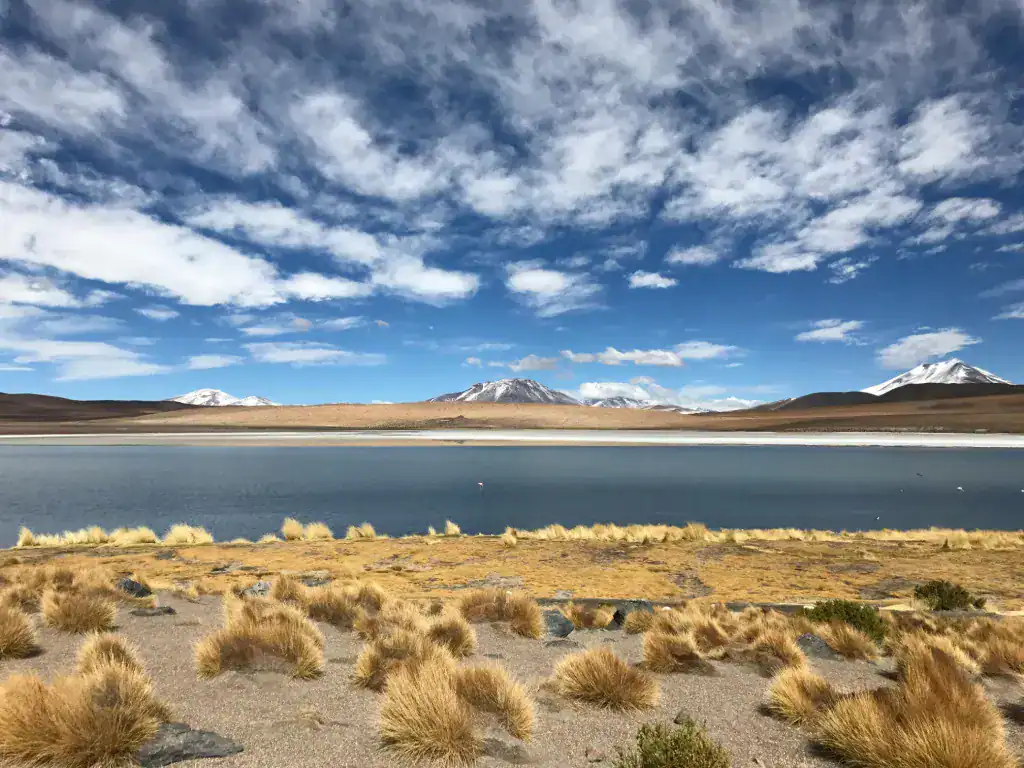
Final Thoughts: You’ll Probably Be There Anyway
So yeah, the Altiplano’s not a detour – it’s the main stage. Whether you’re heading for the salt flats, Titicaca, La Paz or just trying to breathe at altitude without looking panicked, you’re in Altiplano country.
And now when someone mentions it, you won’t just nod vaguely & pretend you knew. You’ll actually get it.
If you’re planning to hop across the Altiplano, my Bolivia backpacking itinerary might help stitch it together.
Planning when to go? Don’t miss the best time of year to visit Bolivia if you want the Altiplano at its most photogenic.
And if you liked this (might have gone in a bit too hard on the flamingo facts but hey ho), you’ll probably enjoy these random facts about Bolivia I compiled – it gets weirder (and better).
Happy Travels!

